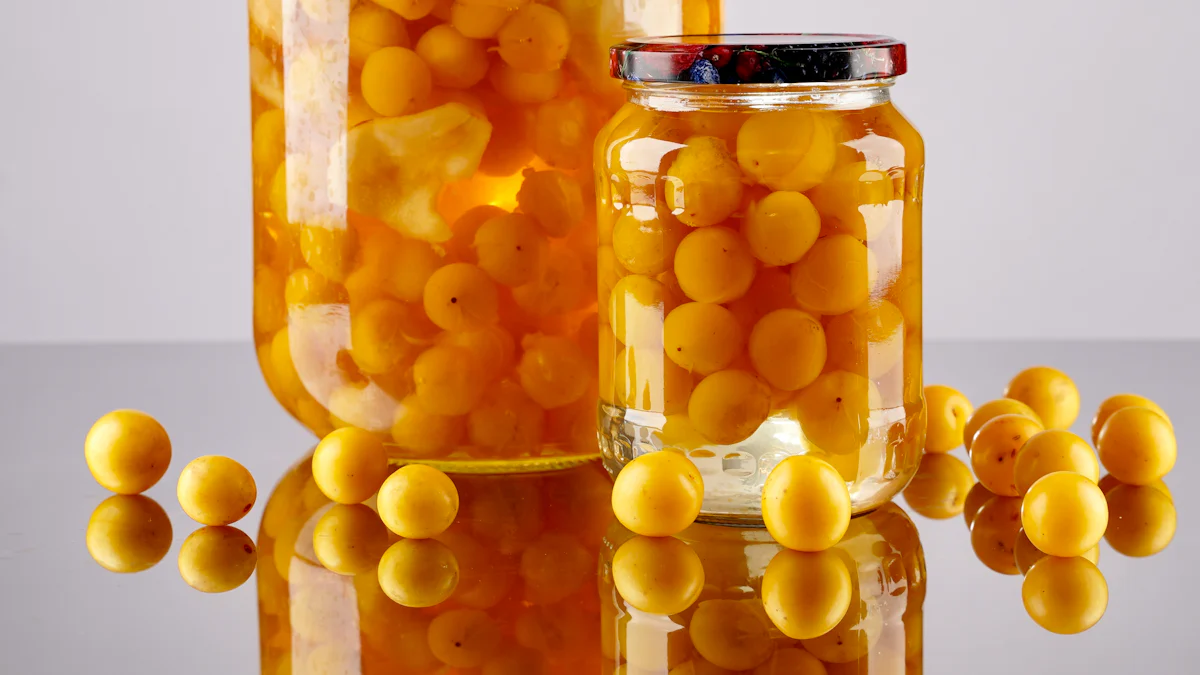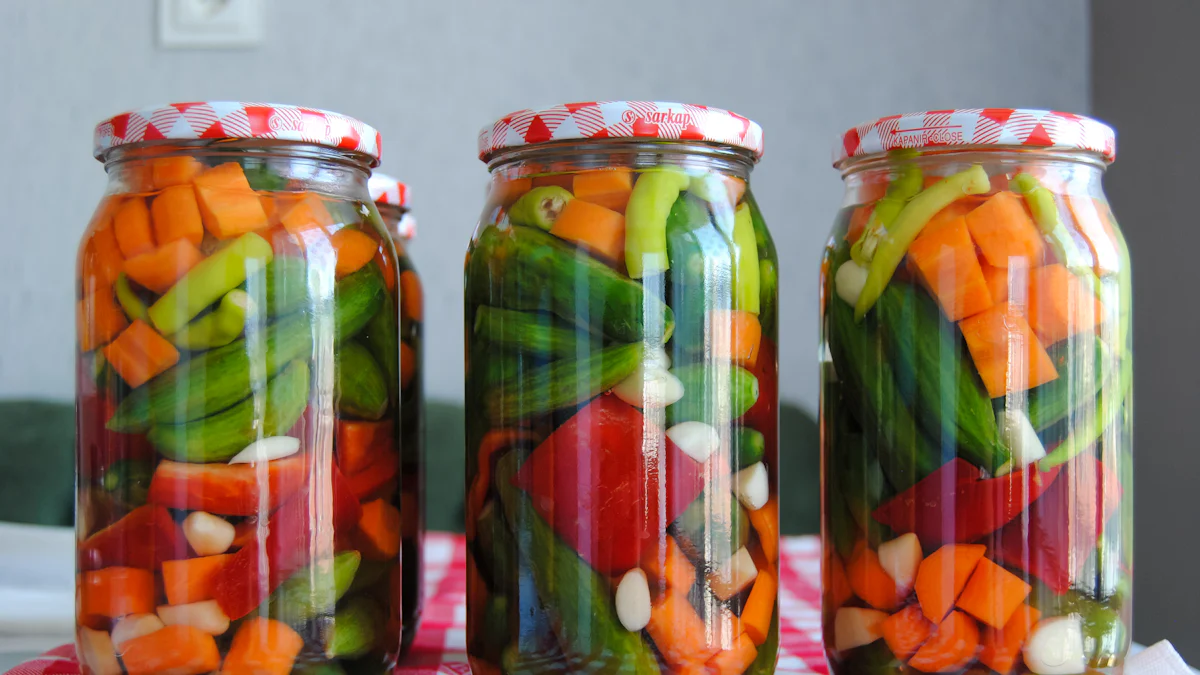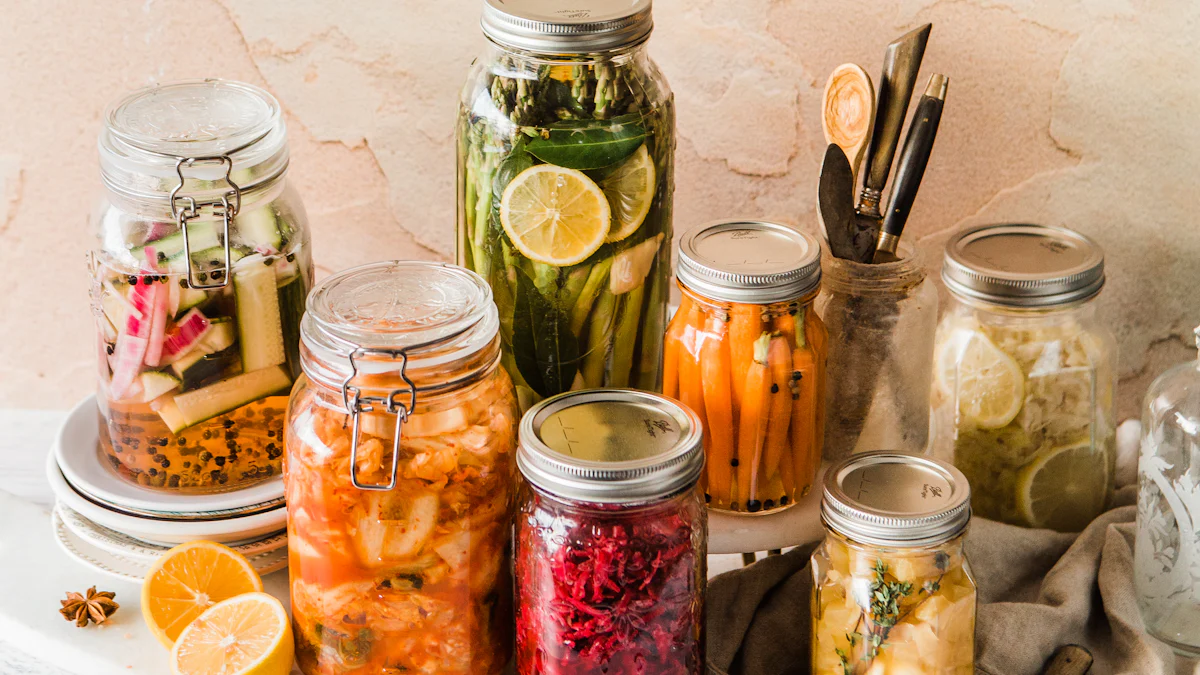How Freezing Protects Food Quality and Safety

Freezing is one of the best ways to keep your food fresh and safe. By lowering the temperature, it stops spoilage and keeps harmful microbes from growing. This method also locks in nutrients like vitamin C, riboflavin, and β-carotene, which are often lost in other storage methods. Studies even show that frozen fruits and vegetables can retain as many nutrients as fresh ones, sometimes more. Plus, freezing preserves the texture and flavor of your food, making it a key part of Frozen Food Production.
When done right, freezing helps you enjoy nutritious, flavorful meals while reducing waste.
Key Takeaways
Freezing food at 0°F (-18°C) stops it from spoiling. It also keeps harmful germs inactive, making it safe.
Blanching vegetables before freezing stops enzymes, keeping taste and texture good.
Use sealed containers to stop freezer burn and keep food fresh.
Label and arrange your freezer to check freshness and avoid waste.
Thaw food in the fridge or microwave to stop bacteria and stay safe.
The Science Behind the Freezing of Food

How Freezing Slows Decay
The role of low temperatures in halting microbial activity
When you freeze food, the low temperatures stop microorganisms like bacteria and mold from growing. These tiny organisms need warmth to thrive. Freezing takes away that warmth, putting their activity on pause. This is why freezing is such a reliable method for food preservation. It keeps your food safe by halting the processes that lead to spoilage.
Freezing's effect on enzymes that degrade food
Enzymes in food can cause it to break down over time, affecting its quality. Freezing slows these enzymes, keeping your food fresh longer. However, some enzymes remain active even at freezing temperatures. That’s why blanching vegetables before freezing is often recommended. It stops enzyme activity and helps preserve both flavor and texture.
Microbial Dormancy in Frozen Food
Why freezing prevents bacteria and mold from thriving
Freezing of food doesn’t kill microorganisms, but it puts them into a dormant state. This means they can’t multiply or cause harm while the food stays frozen. By freezing food properly, you create an environment where bacteria and mold can’t do any damage.
The importance of maintaining consistent freezing temperatures
Keeping a steady temperature in your freezer is crucial. Fluctuations can allow microorganisms to become active again, even if only briefly. This can compromise the safety and quality of your food. Set your freezer to 0°F (-18°C) or lower and avoid overloading it to ensure consistent freezing temperatures.
Ice Crystals and Food Structure
The formation of ice crystals during freezing
When food freezes, water inside it turns into ice crystals. These crystals form as the temperature drops, locking in moisture. However, large crystals can damage the structure of your food, making it mushy when thawed.
How quick freezing minimizes structural damage
Individual quick freezing (IQF) is a method that freezes food rapidly. This process creates smaller ice crystals, which helps maintain the food’s texture and quality. Quick freezing is especially useful for delicate items like berries or seafood. By using individual quick freezing, you can enjoy food that looks and tastes fresh even after months in the freezer.
Benefits of Freezing Food for Quality and Safety
Nutritional Preservation in Frozen Food Production
How freezing locks in vitamins and minerals
Freezing is one of the best ways to preserve the nutrients in your food. When you freeze fruits and vegetables at their peak ripeness, it locks in essential vitamins and minerals. For example, frozen broccoli retains a significant amount of ascorbic acid (vitamin C), as shown below:
Nutrient | Fresh Broccoli (mg/g) | Freeze-Dried (mg/g) | Dehydrated (mg/g) |
|---|---|---|---|
Ascorbic Acid | Approx. 0.892 | 1.27 |
This table highlights how freezing helps maintain the same nutrient profile as fresh produce, making it a great option for preserving food quality.
Comparing freezing to other preservation methods
When compared to canning or drying, freezing stands out for its ability to retain nutrients. Here’s a quick comparison:
Preservation Method | Nutrient Retention | Nutrient Loss |
|---|---|---|
Freeze Drying | Minimal | |
Canning | Up to 50% loss | Significant |
Freezing ensures your food keeps its nutritional benefits better than most other methods, making it a top choice for frozen food production.
Retaining Texture and Flavor
How freezing prevents flavor loss
Freezing food helps you enjoy meals that taste fresh even after months. By halting spoilage and locking in moisture, freezing prevents flavor loss. This is why frozen fruits and vegetables often taste just as good as fresh ones. Quick freezing methods, like IQF, are especially effective at maintaining quality.
Addressing freezer burn and its prevention
Freezer burn can ruin the texture and flavor of your food. It happens when air reaches the surface of frozen foods, causing dehydration. To prevent freezer burn, follow these tips:
Wrap food tightly to block air exposure.
Use wax freezer paper for better insulation.
Try a vacuum sealer to remove air completely.
Individually wrap meats, poultry, and fish for added protection.
Keep your freezer at 0°F to maintain quality.
These steps will help you preserve food and enjoy its original taste.
Extending Shelf Life to Preserve Food
Reducing food waste through freezing
Freezing food is a simple way to reduce waste. It lets you store items for months without losing quality. This means you can buy in bulk, save money, and avoid throwing away spoiled food. Plus, freezing supports sustainable habits by cutting down on waste and its environmental impact.
Examples of foods that freeze well
Many foods maintain quality when frozen. Here’s a handy guide:
Food Type | Quality Duration at -4°F |
|---|---|
Pork | |
Fish | 3 to 7 months |
Fried Chicken | 3 to 7 months |
Animal Organs | 3 to 7 months |
Spinach | 3 to 7 months |
Sugared Fruits | Over 1 year |
Beef | Over 1 year |
Most Vegetables | Over 1 year |
Bakery Products | Over 1 year |
Freezing lets you enjoy a wide variety of foods while reducing food waste and ensuring safety.
Practical Tips for Freezing Food Safely

Best Practices for Freezing
Choosing appropriate containers and packaging
Using the right containers is key to maintaining the quality of your frozen food. Airtight, moisture-vapor-proof materials like glass or rigid plastic work best. These materials prevent evaporation and protect your food from freezer burn. Flexible options, such as heavy-duty aluminum foil or polyethylene bags, are also great for saving space.
When choosing containers, think about size and shape. Pick ones that fit well in your freezer and leave a little room for food expansion. This prevents spills and ensures proper storage. Always use containers with airtight seals to keep air out and preserve the safety of your food.
Labeling and organizing frozen food
Labeling your frozen food might seem like a small step, but it makes a big difference. Add clear labels with the name of the food and the freezing date. This helps you track how long items have been in storage and prevents spoilage.
Organizing your freezer is just as important. Group similar items together, like meats or vegetables, so you can find what you need quickly. A well-organized freezer saves time and ensures you use older items first, reducing waste.
Safe Defrosting Techniques
Refrigerator thawing vs. microwave thawing
Thawing frozen foods safely is crucial to avoid bacterial growth. The refrigerator method is the safest option. It keeps food below 41°F, preventing bacteria from multiplying. Although it takes longer, it’s perfect for items like meat or poultry.
If you’re in a hurry, the microwave is a faster alternative. It heats food quickly, reducing the time spent in the danger zone. However, uneven heating can occur, so cook the food immediately after thawing to ensure safety.
Avoiding unsafe practices like countertop defrosting
Never thaw food on the countertop. Room temperature allows bacteria to grow rapidly, increasing the risk of spoilage and foodborne illness. Instead, stick to safe methods like refrigerator or microwave thawing. If you need a quicker option, thaw food in cold water, changing the water every 30 minutes to keep it cool.
Common Freezing Mistakes to Avoid
Overloading the freezer
Overloading your freezer can block airflow, making it harder to maintain consistent temperatures. This can lead to uneven freezing and compromise the safety of your food. Keep your freezer organized and avoid stuffing it to the brim.
Refreezing thawed food
Once food has thawed, refreezing it can affect its quality and safety. Thawing causes moisture loss, which impacts texture and flavor. Plus, bacteria can grow during the thawing process. If you must refreeze, cook the food first to kill any bacteria before freezing it again.
Addressing Concerns About Freezing Food
Does Freezing Kill Bacteria?
The difference between inactivating and killing bacteria
You might think freezing completely eliminates bacteria in food, but that’s not the case. Freezing doesn’t kill harmful microbes; it only inactivates them. When food is frozen, bacteria and other microorganisms go into a dormant state. They stop growing and multiplying, which keeps your food safe while it’s frozen. However, once you thaw the food, these bacteria can reactivate and start growing again. This is why proper handling and cooking are so important after defrosting.
Why proper cooking is still necessary
Freezing helps preserve food safety, but it’s not a substitute for cooking. Cooking food to the right temperature kills bacteria and ensures it’s safe to eat. For example, thawed meat or poultry may still contain dormant bacteria. If you don’t cook it thoroughly, you risk foodborne illnesses. Always use a food thermometer to check that your food has reached the recommended internal temperature before serving.
Does Freezing Affect Food Quality Over Time?
How long different foods can be stored in the freezer
Freezing slows down spoilage and keeps food safe for months, but the quality can decline over time. Different foods have different storage limits before they lose their texture or flavor. Here’s a quick guide:
Food Type | |
|---|---|
Hot dogs (opened) | 1 to 2 months |
Luncheon meat (opened) | 1 to 2 months |
Bacon | 1 month |
Hamburger | 3 to 4 months |
Fresh beef (steaks) | 4 to 12 months |
Cooked ham | 1 month |
Stick to these timeframes to enjoy the best quality from your frozen foods.
Signs of freezer spoilage
Even with proper freezing, some foods can develop freezer burn, which affects their quality. You’ll notice grainy, dry, or grayish-brown spots on the surface of the food. This happens when ice crystals form and dehydrate the food, exposing it to oxygen. While freezer-burned food is still safe to eat, it may lose its texture, color, and flavor. To avoid this, use airtight packaging and keep your freezer at a consistent temperature.
Freezing is a fantastic way to preserve food, but understanding its limits helps you maintain both quality and safety.
Freezing plays a vital role in preserving food quality and safety. It extends shelf life, locks in nutrients, and keeps your meals fresh. By freezing food below 0°F, you slow nutrient loss and stop harmful microorganisms from growing. Simple steps like blanching vegetables or using airtight containers can make a big difference in maintaining flavor and texture.
Freezing also supports sustainable habits. Did you know households that freeze food waste less compared to others? In fact, 55% of people buy frozen food specifically to reduce waste. By incorporating freezing into your routine, you help the planet while enjoying safe, high-quality meals.
Ready to make the most of freezing? Follow these tips:
Freeze food quickly to preserve texture.
Use proper packaging to avoid freezer burn.
Thaw food safely to maintain quality.
Freezing isn’t just convenient—it’s a smart way to protect food quality and safety while reducing waste.
FAQ
What foods should you avoid freezing?
Some foods don’t freeze well. For example:
Leafy greens like lettuce become mushy.
Cream-based sauces separate.
Fried foods lose their crispiness.
Eggs in shells can crack.
Stick to foods that freeze well, like fruits, vegetables, and meats.
Can you freeze food in its original packaging?
You can, but it’s not ideal. Store-bought packaging often isn’t airtight. Transfer food to freezer-safe bags or containers to prevent freezer burn. If you’re short on time, double-wrap the original packaging with aluminum foil or plastic wrap for extra protection.
How can you tell if frozen food has gone bad?
Look for these signs:
Freezer burn (dry, grayish spots).
Odd smells when thawed.
Ice crystals inside the packaging.
If you notice any of these, the food might not taste good, but it’s usually still safe to eat.
Is it safe to freeze hot food?
No, let hot food cool first. Freezing hot food raises the freezer’s temperature, which can partially thaw other items. Cool food to room temperature, then freeze it in small portions to speed up the process and maintain safety.
Can you freeze dairy products?
Yes, but with caution. Hard cheeses like cheddar freeze well, but soft cheeses like brie may change texture. Milk can separate when thawed, but it’s still usable for cooking. Yogurt and cream can also freeze, but expect some texture changes.
Tip: Freeze dairy in small portions to avoid waste.
See Also
The Benefits Of Cryogenic Freezers For Food Quality
The Role Of Cold Rooms In Food Safety
The Advantages Of IQF Tunnel Freezers For Preservation

